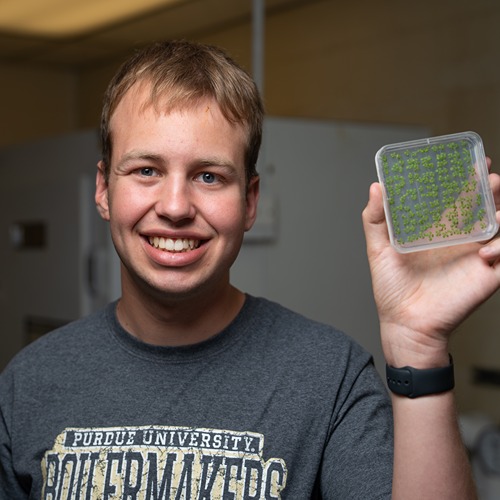Team of Purdue scientists to create pesticide usage database for Department of Defense
A team of scientists at Purdue University and the Department of Defense (DoD) are creating a state-of-the-art database to record and store pesticide usage during military overseas contingencies.
Michael Hill, director of Purdue’s Center for Environmental and Regulatory Information Systems (CERIS), will lead the team of scientists, which includes members from Purdue’s Entomology Department, the Purdue Military Research Institute (PMRI), and the United States Army, Air Force and Navy.
Funded by a $900K grant from the Armed Forces Pest Management Board, the three-year project will focus on the development of a web-based searchable database, and iOS and Android mobile applications for recording and storing DoD contingency pesticide usage data.
The current system in place for tracking pesticide usage within the U.S. military is a combination of paper-based forms and electronic spreadsheets, Hill explained. The new automated system for storing, retrieving and analyzing pesticide usage information will save time and minimize reporting and transcription errors.
Ameya Gondhalekar, associate research professor in entomology and Co-PI on the project, said the university’s partnership with the DoD on this grant will open the opportunity for pursuing research on pesticide use patterns-- an excellent research topic for service members interested in pursuing graduate studies in entomology at Purdue or other institutions.
Leon Robert, project consultant, professor of engineering practice and retired U.S. Army Brigadier General, said the new system to be developed and secured by Purdue will enable senior pest management consultants, public health centers, DoD Installation Pest Management coordinators and the Armed Forces Pest Management Board staff to review pesticide applications to ensure compliance, identify pesticide resistance risks, identify geographic areas of high insect vector threats and consolidate active ingredient information. The app’s features will support the DoD’s “Measures of Merit,” a system the DoD uses to effectively portray actual progress in achieving environmental compliance and pollution prevention goals and objectives.
The project will involve faculty, staff and students working on each phase of the database, allowing for hands-on experience to a high-profile project.





